The Ministry of Defence has indicated that plans for a second undersea cable protection ship are still under consideration, with final guidance to emerge from the upcoming Strategic Defence Review.
Responding to a question from Lord West of Spithead in the House of Lords on 4 November, Lord Coaker, Minister of State for Defence, highlighted the importance of this review in shaping the Royal Navy’s undersea cable protection strategy.
Lord West asked: “To ask His Majesty’s Government when the second undersea cable protection ship will join the Royal Navy.”
In his response, Lord Coaker stated that RFA Proteus, the first Multi-Role Ocean Surveillance (MROS) ship, is currently operational and actively protecting critical national infrastructure.
However, he noted that the Defence Review will assess how best to “deliver and augment RFA Proteus, taking advantage of the opportunity presented by new technologies.”
Lord Coaker’s comments reflect an intentional to balance current resources with emerging strategic demands, especially concerning the potential vulnerabilities of undersea cables.
These cables support crucial telecommunications and power networks, making them vital to the nation’s security and economy. Protecting this infrastructure has become an increasing priority, with heightened awareness of potential threats from both state and non-state actors.
Lord Coaker suggested that by harnessing advanced capabilities, the MOD seeks to “enhance RFA Proteus’s role in safeguarding our critical infrastructure” while maintaining flexibility to respond to emerging threats.
The future of British seapower lies in ships like RFA Proteus
Earlier this year, I had the opportunity to go aboard RFA Proteus, which was docked alongside HMS Belfast in London. The ship’s modern design and advanced technology left a strong impression, especially when compared to the historic Belfast. During my tour with colleagues from other defence publications, we first visited the flight deck, which still reflects its commercial origins. While it’s primarily there for emergency evacuation, its high position atop the ship is notable.
The bridge was particularly striking, divided into two sections: one for standard navigation and the other for controlling remotely operated vehicles (ROVs) during surveillance missions. This setup, with large screens and sophisticated controls, indeed brought to mind the layout of a starship. The ROV bay was another highlight, showcasing the ship’s capabilities in underwater operations, with ample space for equipment and workshops dedicated to maintaining these critical systems.
RFA Proteus, originally built in Norway as an offshore support vessel, now serves as a specialised asset in protecting the UK’s undersea infrastructure. With her rapid procurement and advanced technology, she symbolises a forward-looking approach to maritime security amidst the growing need for resilience in this area, you can read more here.
At the UK Defence Journal, we aim to deliver accurate and timely news on defence matters. We rely on the support of readers like you to maintain our independence and high-quality journalism. Please consider making a one-off donation to help us continue our work. Click here to donate. Thank you for your support!


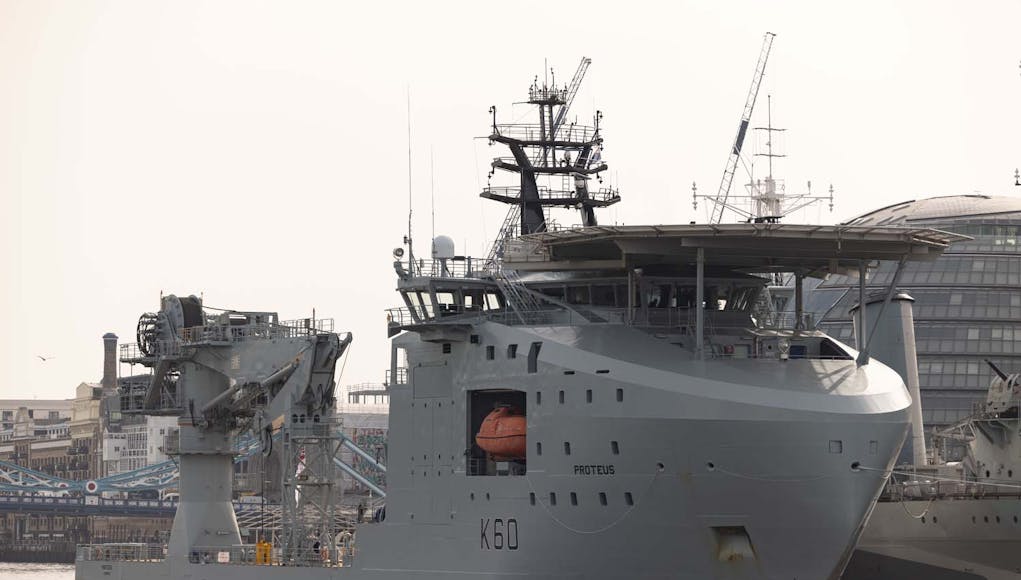


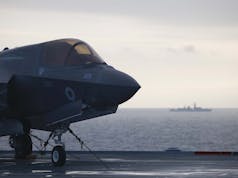
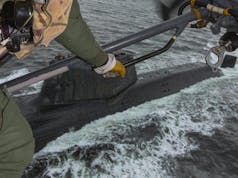

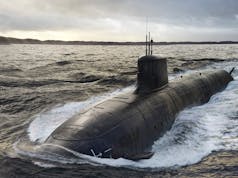


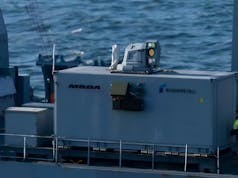


MoD = Idiots.
Bring back the Admiralty Board.
The money spent on the MoD would pay for a fleet of, well ….everything including new minesweeper/hunters – remote or manned; while the light blue and grunts could get their kit etc with less of the bureaucratic mess the MoD generates.
You know the Admiralty Board still exists? 😉
😀
A bit pedantic of me.
The Navy Board might be a better place for the week to week decisions, and in reality military serve alongside civilians in Main Building in places like DCDS (MC) making decisions on capabilities to procure, so the “blame the MoD” old cliche never makes sense to me.
is that week or weak?
making decisions my ars* that’ll be the day
how often does the old admirals get dusted and hoovered? I think it’s in an old broom cupboard. full of smelly old mops and rag with a sign in the door saying ‘do not disturb important things being done’ ⚓🙏😁😁 ⚓⚓⚓🤐
The work this ship does is always described in terms of surveillance. But what do they do if they find anything dodgy? Are they equipped to do anything about it (or about whoever is doing it) ? This whole area of undersea warfare remains for me a bit – well – murky
As in the term “Grey Zone” so below the threshold of war, it’s a bit of a Grey area!
It’s a bit of a quandary on what they are supposed to do. Sending teams of ROVs down, or Divers, James Bond style, to do battle with Russian saboteurs means combat, with all the ramifications of that with another, nuclear armed state.
To me, we have this capability to monitor the network, discover any tampering and fix or stop it before too much damage is done.
Likewise, I’d hope in this and other Grey Zone areas, be it Cyber, spying, sabotage, SF, Proxies, we are returning the compliment.
It’s all a game and going all gung ho might not be the best idea.
Russians have done this for years.
Whisky on the Rocks.
UWVs tracks found on the seabed close to Stockholm, and Alaska
The RN and USN SSNs historically operated in Soviet waters, or very close to them.
PRO at Kew have released files on these missions. Lots of them. But not what was done. The USN tapped Russian cables to Vladivostok.
Just the ones publically known.
To my eye there’s two ways it’ll work:
Either, keeping a direct eye on potential Russian assets in a “Hey we’re watching you so don’t try anything” kind of way, because a big part of Greyzone ops is deniability.
“Yes Comrade, we had ship in area of suspicious undersea cable breach but it wasn’t us.”
“Well here’s video footage of you doing it.”
Option 2 is, not preventing Russia from damaging undersea infrastructure, but simply being in a position to quickly repair any damages that have happened.
Plus I mean…Nord Stream 2 anyone?
Morning mate.
Did you contact upstairs about profile? I cannot see anyone’s either.
Yes, apparently the comments application is eating bandwith like nobody’s buisness and they’ve disabled a lot of the functionality temporarily while they try to fix problems.
Glad it is only temporary, as following posters such as yourself is not easy.
NS2? You want us to watch the US too?
Congratulations, you’ve completely missed the point I was making.
As you say though, we should definitely be returning the favour. If Russia wants to deny anything to do with those suspiciously slavic diving enthusiasts, then we can and should deny any involvement when they all somehow go missing.
👍
They’re equipped to phone home anhat’s it a sentry without a gun. waste of money and scant resources
a task better done by a navy submarine, or a wolf pack of armed cetus type drones.
like E.T they phone home and well, nothing happens.
When did you get a tour of a starship?
I just called an Uber
The 2nd MROSS I believe is planned to be more of a HMS Scott type vessel, so deep water survey and data gathering than just cables.
It is planned to be a new build. Is this actually necessary for Scott’s niche role or could another 2nd hand type like Proteus suffice if it saves some money?
HI Daniele,
I read somewhere that some of the data that Scott used to gather e.g. water temperature in the water column, can now be gathered by long endurance research drones that have been available for sometime. We are also aware that bigger systems are also under development that can deploy scanning sonars so I think they might be considering an approach that does not require a dedicated platform as some of the drones can cover a few thousand miles so might be capable of transit – operation – transit mission profiles.
The smaller drones will still need recovering but I don’t think it needs a huge ship to do it – may be even a drone boat..!
There must be gaps in drone capability so I suspect there is still a need for RFA Proteus but a mix might be good enough..?
Just some rambles…
Cheers CR
Morning mate.
Good points on the UUVs, I’d forgotten about those. I know the RN have already bought several smaller ones.
I see HMS Scott is still needed as just gone in for refit.
we shouldn’t need a whole ship for this.
Possibly not but in the short term perhaps it is the best option, especially if you need to deliver a drone number of drones into an area more quickly than the drones can transit. Also, having a ship with workshops and control facilities may be needed until drone tech can be more widely introduced, enough support teams trained and large scale maintenance support systems developed.
I think long term drones will gradually take over many roles going forward and will come in all shapes as sizes from possibly uncrewed arsenal ships (commanded from manned ships) down to small ROV’s monitoring the underwater security of ships in harbour. There are significant opportunities here, I just wish someone would come up with a workable strategy to bring them into service more quickly. We really need the mass.
Cheers CR
Just spotted an article on Navy Lookout. Scott has gone into A&P Falmouth to start a Ship Life Extension Program to extent her life out to 2033 so that might contribute to MoD’s thinking, especially has they struggled to get the civilian ships up to RFA standards and in to service on the original timescales…
Cheers CR
As far as I know everything Scott did can’t now be done by USV’s. Better to spend the money on frigates or other surface combatants and use commercial off the shelf vessels for everything else and just make sure the USV’s are platform agnostic.
Makes sense.
the black hole in the budget is something that needs looking at with the angle of ‘do we really need that? or, haven’t we spent enough on that Dragonfire(?). what have we got from all of that investment nothing, well bloody cancel it. and put the money to better use somewhere else.
If they bought it, would they be able to man it?
You are absolutely right; the question is whether they can man it, given they can’t staff the ships they currently have. I served as a CPO(D) in the RFA until 2021, and by the time I left, the decline in personnel was already evident. Many crew members, like myself, were in their 60s and tired of the constant workforce shortage and being underpaid—though that’s a story for another time.
Seems plain, to keep undersea cable exposure to a minimum.
We had a spate of stories like this a couple of months back, when any minister’s response of, let’s see what the SDR comes up with, was turned into such and such capability is in danger. Tempest blew up enough and was sensitive enough to require a backtrack of the wording. This feels like just another one of those stories generated because there’s insufficient political sensitivity to require careful phrasing. It doesn’t feel like there’s an intent to balance anything. It’s just a two sentence brush-off answer.
Nothing substantive here. I can’t see any change in MOD or government position.
Hang on a minute the money was found for 2 ships, so where has the money gone?
Take your time folks, God forbid there should be any sense of urgency in the Dept.
Stop all foreign aid.
This country and its safety is more important
We already stopped foreign aid, most of its being sent to Ukraine or used to pay hotels for asylum seekers in the UK, nothing goes abroad nor except minimal UN commitments.
Not entirely true. We still spend 0.5%. As much goes to Afghanistan as Ukraine. A large portion is paying for immigration costs.
if say oroteus finds Ivan messing about with the cables, what can it do? call home, and that’s about it. for me when we have say a load of Cetus type submarine drones, we ,NATO, could have tandem patrol drones doing what oroteus is tasked with following the cables armed and ready if required to take a military stance to remove/ eliminate the obvious aggressor.sounds good to me.
The problem is that a second ship would require (A) an actual resolution to the RFA’s workforce crisis and (B) a government that considered national defence a priority rather than just a tool to funnel money into marginal constituencies.
BRAIN DEAD IDIOTS I
Flight Deck designed primarily for emergency evacuation? Er, no! I don’t know who told you that? A Cadet maybe?. It’s just where they routinely put the on that class of ship. There isn’t the room to put them anywhere else.
Face facts the undersea cables are un-defendable because they can be severed anywhere along their hundreds or thousands of miles. As we move to a 100% electric world under crazy Ed we put all our eggs into one basket which is easily sat upon. The Internet will be gone too so at least Gen Z will have nothing to do waiting to be conscripted.
So we scrapped most of not all the MCM fleet for the purpose of drone mother ships…now this happens. No drone mother ships, no drones, no MCM fleet. Great job Tories 👍
Would we not be better served by contracting British companies like Global Marine Systems who repair and survey these type of cables all the time around the UK using British flagged ships to do this. We could spend the money saved on other fleet assets?
When will these fxxxxxxg useless people get it into their heads ,we need this ship to be bought 12 ships is what is needed,70 million a piece ,to have ships like this in small numbers is madness ,look at the cables and pipes that run along Britain and Ireland, north sea infrastructure, self explanatory